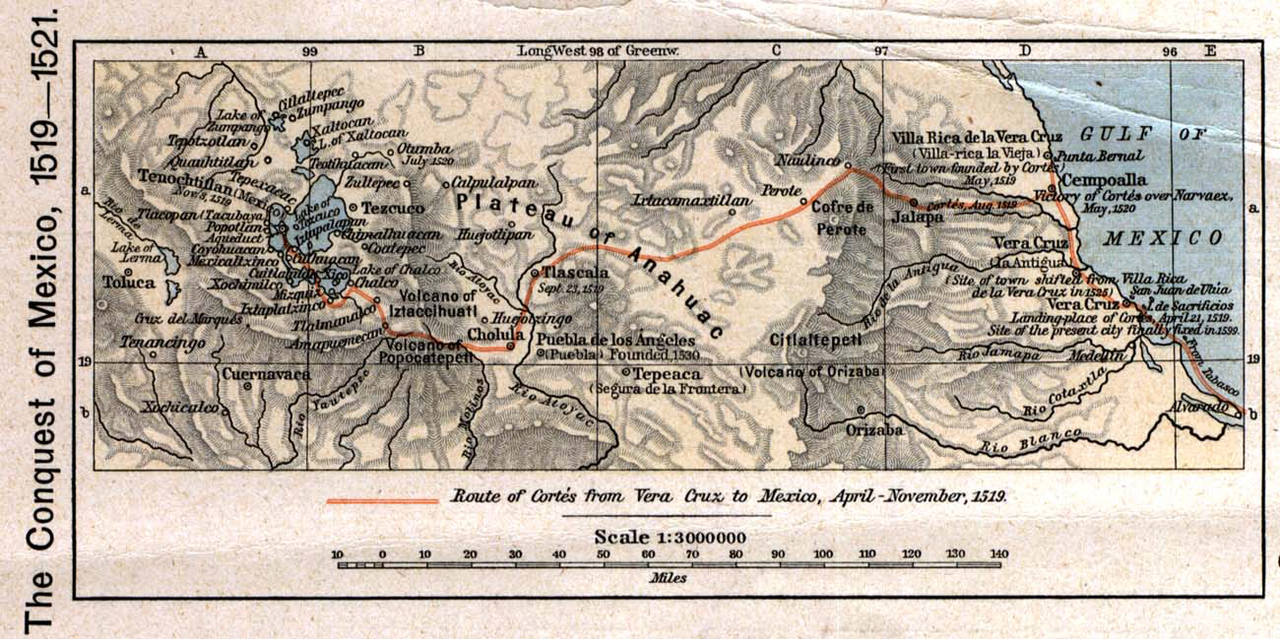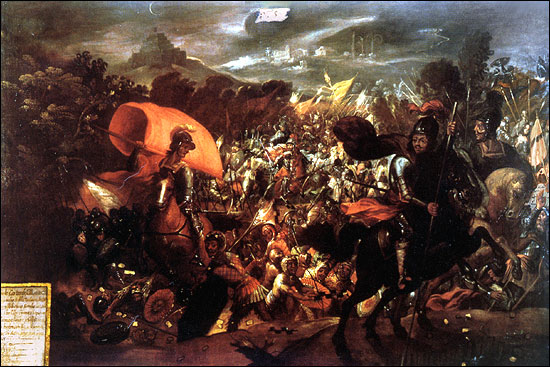I hope they don't convert... tired of old religion being destroyed
Convertion is quiet inevitable. But they can still preserve some parts of their culture. Cahtolic Church hardly can fully control what is happening in Aztec Empire.
I hope they don't convert... tired of old religion being destroyed
True but I do hope that the Aztecs and the rest of Mesoamericans (minus the ones who allied with Cortes and the Spaniards) keeps their temples and clothing.Convertion is quiet inevitable. But they can still preserve some parts of their culture. Cahtolic Church hardly can fully control what is happening in Aztec Empire.
If Tenochtitlan is destroyed we riotTrue but I do hope that the Aztecs and the rest of Mesoamericans (minus the ones who allied with Cortes and the Spaniards) keeps their temples and clothing.
The European powers were happy enough to have trade with India and China despite them not being Christian. Why is there the assumption that they need to be Christian to have trade relations with European powers?I think a Catholic Anahuac is inevitable, since conversion gives them access to trade with the Spanish and the rest of Christendom and removes the proverbial target on their back due to their perchance for human sacrifice. Plus I think the religion might help the Tlatoani convert the Empire from a tributary state into a more centralized regime where its military could be reformed to resist the European powers, as I have heard that human captives were an important source of tribute, which isn't necessary if the Aztecs become Catholic.
Eh. I don't think conversion is inevitable. The Norse converted because they were right next door to Christendom.
I do think human sacrifice will at least be rolled back eventually. Until it's basically just state sponsored ritual assisted suicide. They might even become the leading advocates for suicide rights.
I wouldn’t refer to a failed Spanish invasion as a screw, more of a lack of a wank. Hell, the defeat might even help them in the long run by avoiding their over-reliance on American silver.Aztec TL ?
Followed curious at how much a Spain screw the TL will be
One of the Tag is Spain screw so I’m expecting butterfly won’t be kind to Spain in that TL .I wouldn’t refer to a failed Spanish invasion as a screw, more of a lack of a wank. Hell, the defeat might even help them in the long run by avoiding their over-reliance on American silver.
1. As long as someone decided to invade they would always have a pretty good chance to win by exploiting the pre-existing local politics and recruiting local allies. If a European victory really was that unlikely it wouldn't have been replicated a dozen times over in other Mesoamerican states or South America.I wouldn’t refer to a failed Spanish invasion as a screw, more of a lack of a wank. Hell, the defeat might even help them in the long run by avoiding their over-reliance on American silver.
I imagine that’s more a of a relative screw. Compared to OTL, going from owning two thirds of the Americas to owning a handful of Caribbean islands is quite the fall from grace.One of the Tag is Spain screw so I’m expecting butterfly won’t be kind to Spain in that TL .
1. As long as someone decided to invade they would always have a pretty good chance to win by exploiting the pre-existing local politics and recruiting local allies. If a European victory really was that unlikely it wouldn't have been replicated a dozen times over in other Mesoamerican states or South America.
That’s why I said long term. American silver was ruinious to the Spanish economy due to rampant inflation. If Spain can get sugar production up on its Caribbean islands, it can get a strong flow of revenue without relying on a monkey’s paw.2. The only reason why Philip relied so much on American silver was because otherwise he simply wouldn't have money... Like, at all... When Charles left Spain to him it was already in debt and running on an annual deficit. He then found himself involved in even more wars for practically all of his reign which didn't exactly help his finances. He didn't just rely on the silver, he needed it.
Nah, the Treaty of Tordesillas was already done before the POD and it's unlikely that Portugal are going to be interested in trying to do something like that if the Spanish weren't able to do it with the Aztecs. Maybe the Spanish could colonize Brazil instead if Anahuac and Tawantinsuyu aren't viable inroads for conquest?What of the Portuguese? Could they subjugate the Inca?
Keep in mind people a disaster for the Spanish will change the nature of Spanish colonization. This would mean they would handle the Inca much differently than in OTL (which was heavily inspired by the bravado of the conquistadors facing the Aztecs.)
Who knows, we could possibly see the Spanish instead seek to subjagate the Inca as a vassal instead out outright new spain (which wont have the Mesoamerican example TTL)
you literally called the Spanish victory a wank by saying a defeat is "a lack of a wank"... Pointing out the consistency with which it succeeded iotl is a direct reply...Honestly, this is completely irrelevant to what I said. What was the point here?
You take away the inflation (not the inability to replay loans) but how much of a long term success is left for Spain when Philip:That’s why I said long term. American silver was ruinious to the Spanish economy due to rampant inflation.
Portugal would also be hard pressed to go through the entire Amazon to get to the Inca.What of the Portuguese? Could they subjugate the Inca?
Not really, going “Here’s the extremely specific set of circumstances needed to pull this off” doesn’t really contribute anything.you literally called the Spanish victory a wank by saying a defeat is "a lack of a wank"... Pointing out the consistency with which it succeeded iotl is a direct reply...
You’re not contradicting me. No shit Spain without the practically infinite money from America isn’t going to have as large of an empire, nobody said otherwise. Without the immense expenditures required to act like the Great Power of Europe, I would say Spain is indeed in a better position in the long run. Sure, Spain’s enemies will get stronger vis a vis them, but that happened anyway. Spain lost the Netherlands despite its empire, Spain became a second rate then third rate power despite its empire, Spain became overshadowed by its rivals despite its empire.You take away the inflation (not the inability to replay loans) but how much of a long term success is left for Spain when Philip:
1. Doesn't have the money to build a fleet and defeat the Ottomans
2. Doesn't have the money to hold on to any part of the Netherlands, including the south
3. Doesn't have the money to support the Catholic League in France, who in turn can't resist the Protestants/Henry IV nearly as long or efficiently.
Taking away the silver not only weakens Spain, it strengthens all her enemies. It goes even further back than that, as even Charles already relied on the American silver to help repay the loans he took to fight all his wars as well. Taking it away is basically strangling the Spanish empire in its cradle.
The most realistic alternative is Philip still successfully becoming king of Portugal in the 1580s and using their Indian Ocean trade and sugar plantations as a source of income for the crown. But that would be way too late and still wouldn't be enough, it also wouldn't last. Furthermore shifting the Spanish focus from their now comparatively unprofitable colonies in the Americas to the east just leaves the Americas open to all the other Europeans instead. Just like how iotl the other Europeans profited from Spain's focus on the Americas to establish themselves in India and Indonesia instead.
Edit: I'm gonna stop this discussions since we're under someone else's tl lol

